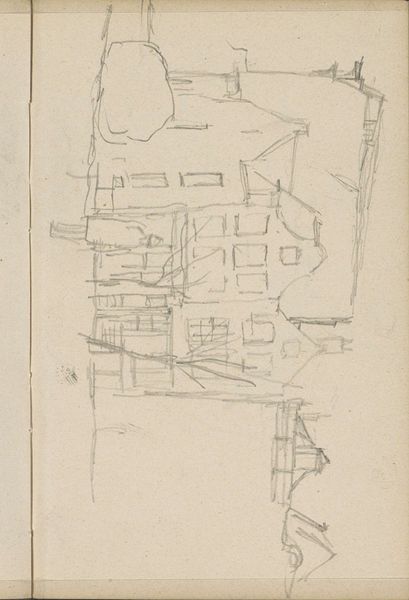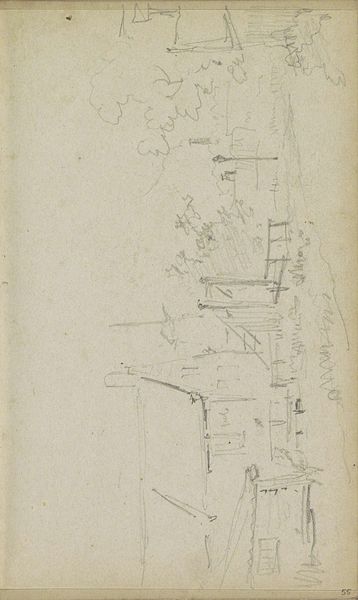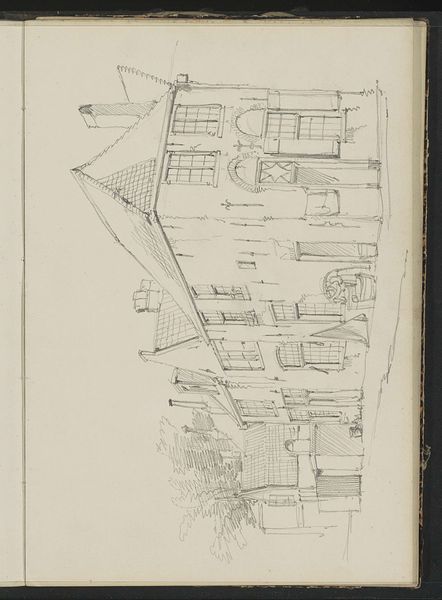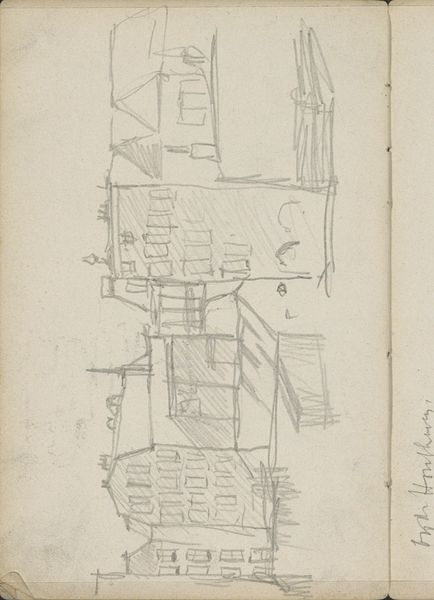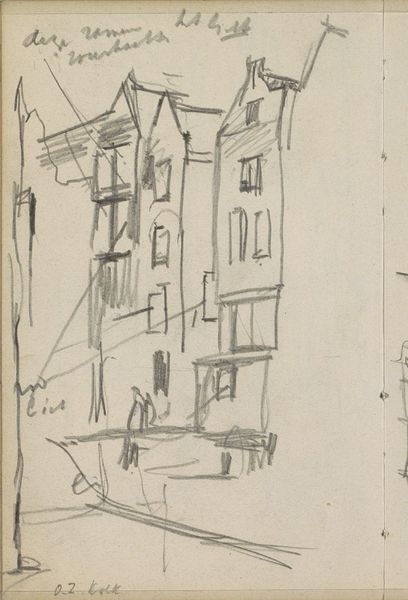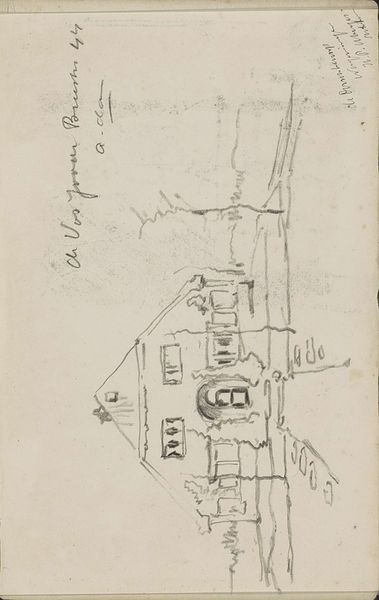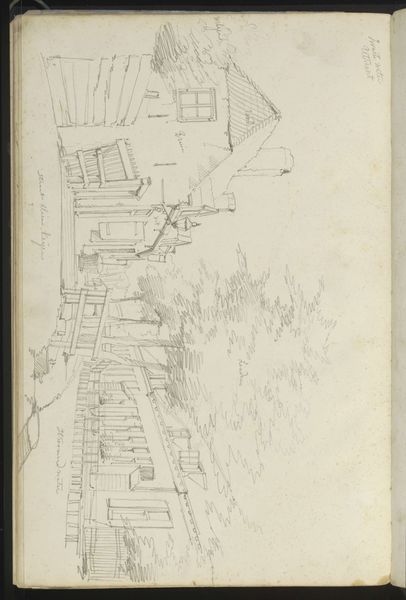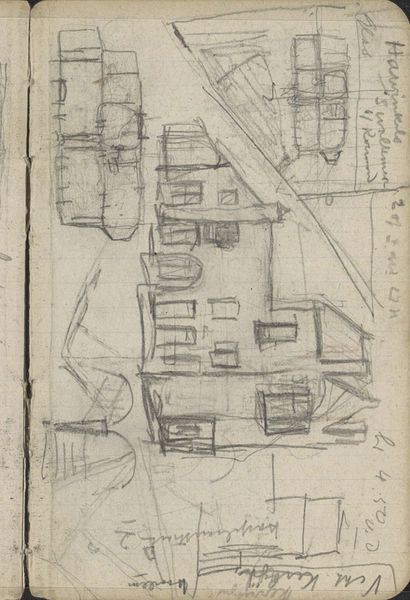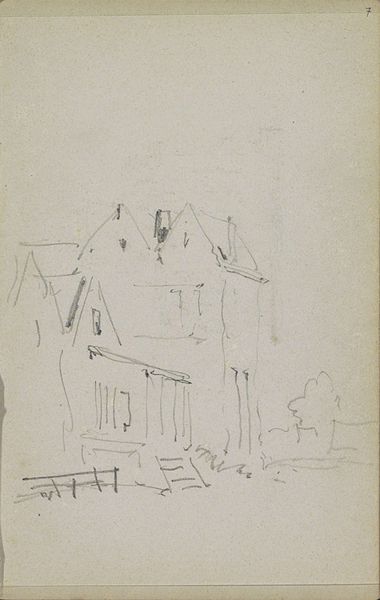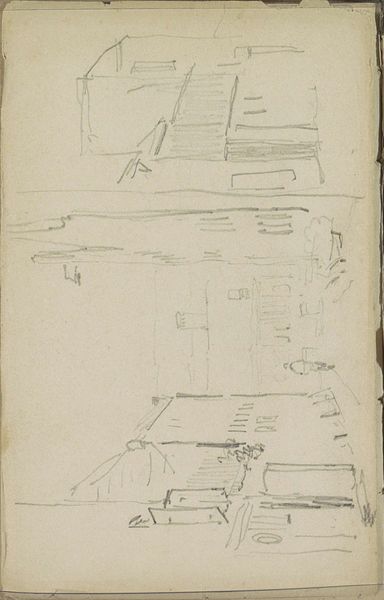
Copyright: Rijks Museum: Open Domain
George Hendrik Breitner made this sketch of Haarlem’s Sint-Bavokerk, in graphite on paper, sometime between the late 19th and early 20th centuries. The quick, assertive marks are indicative of his broader artistic practice. Breitner was known for his depictions of working-class life and urban environments, documenting Amsterdam’s dynamism, and eschewing the traditions of genre painting. The immediacy of graphite allowed for rapid recording of visual information, perfectly suited to Breitner's desire to capture fleeting moments of everyday life. Graphite’s accessibility and relative inexpensiveness also speaks to Breitner’s democratic approach to art, and his willingness to engage with the social realities of his time. The sketch's energetic lines and unrefined texture reflects the artist's intention to represent the world as he saw it. It's in looking at the materials and processes of artistic creation that we can begin to understand how artworks acquire social and cultural meaning, challenging the traditional distinction between fine art and craft.
Comments
No comments
Be the first to comment and join the conversation on the ultimate creative platform.
